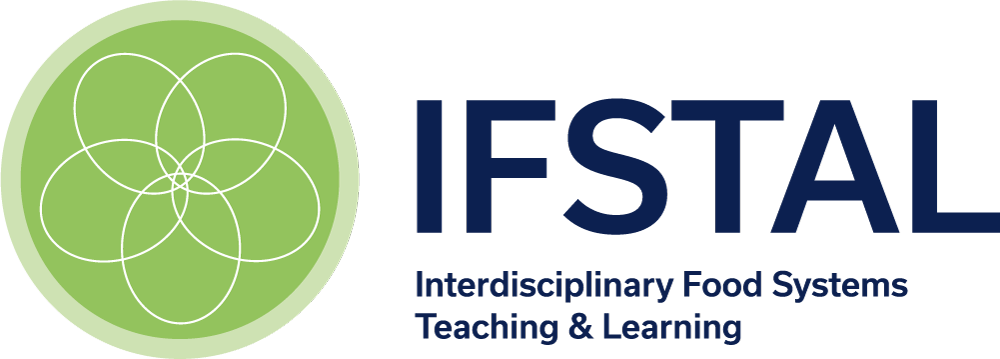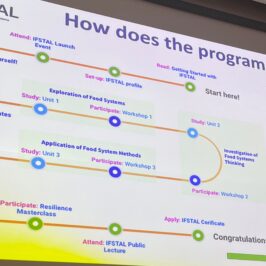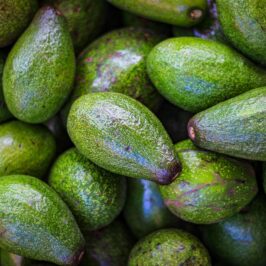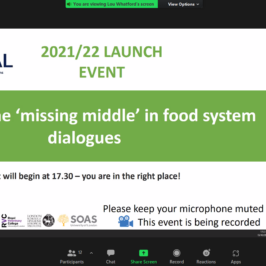Microorganisms live in, on and around us…everywhere. And suffice to say that to date we’ve had quite a complicated and conflicted relationship with these organisms. ‘Germs’, ‘bugs’ and hygiene, sit alongside ‘probiotics’, fermented foods and ‘healthy immune systems’. In actual fact we are only just beginning to explore, let alone understand, ‘the microbiome’ and our relationship to it.
The microbiome…
The microbiome describes the microorganisms living in, on and around us, and includes bacteria, viruses, fungi and Archaea. We had a fascinating Food Thinkers Lunch in Oxford on the 2nd of December, in which we were lucky enough to hear from two Oxford based researchers looking into this area from quite different angles.
Katerina Johnson works across the Psychology and Psychiatry departments and is completing a PhD looking into the relationship between our gut bacteria and our brain. While Dr Tim Hodgetts is a human geographer who looks at how we govern the human with non-human relationship. Having focussed previously on biodiversity conservation, he has now turned some of his attention to the microbiome.
Katerina started off, introducing us to some of the research suggesting a link between our gut bacteria and behaviour. Mice studies have so far provided a lot of the insight in this field (Cryan & Dinan 2012). An early experiment on the microbiome-gut-brain axis (Bercik et al. 2011) involving swapping gut bacteria between mice, was one of the first studies to suggest that gut microbes may contribute to behavioural traits. Different strains of mice show contrasting behaviour – some strains are more bold and aggressive and others more shy. In this experiment the gut bacteria of the aggressive mice were put into the shy mice and vice-versa, with results showing that previously shy mice showed more aggressive behaviour and aggressive mice, more shy behaviour. Similarly, if the gut bacteria from people with depression are put into mice, those mice also begin to show more depressive behaviour traits.
Furthermore, you do not see normal social development in mice which are bacteria-free from birth (you can breed special germ-free mice!). The microbiome-gut-brain link seems particularly important during brain development when young.
But what is the mechanism at play here?
We just don’t know exactly. The vagus nerve (linking the gut and brain), the immune system and bacteria’s ability to make the same neurotransmitters as we do, may all have a role to play.
A question that many want to know is whether we can help to cultivate ‘healthy’ communities of bacteria in our bodies. A key point to note is that we don’t even know what a ‘healthy’ microbiome looks like. However, there is accumulating evidence that fibre consumption can have beneficial effects on the gut microbiome, including promoting a diverse community (Sonnenburg et al. 2016). In a healthy person, the gut bacterial community can be quite resistant to change, so consuming things like probiotics (foods containing live bacteria) often don’t make much of a difference as they cannot easily colonise the gut (in fact how you make a bacterial colony you introduce to the gut stick around is a big aim for those in the business of supplements).
If you have taken antibiotics though, which can decimate your gut flora, then probiotics or prebiotics, which are foods (non-digestible fibre) that ‘good bacteria’ like to feed on (including dark chocolate, banana, onion, garlic and asparagus), may help to restore your gut microbiome, although there have been limited studies on this.
Research exploring the microbiome-gut-brain axis in humans has shown that consumption of a probiotic drink for a month can lead to reduced neural responses to fearful faces (Tillisch et al. 2013) and consuming prebiotics over a period of time has been found to reduce cortisol (stress hormone) levels in the body (Schmidt et al. 2015).
What might the implications of this be?
There is the possibility that were a causal mechanism established between bacteria and mood, bacteria could play a role in treating some neurological disorders that today use synthetic drugs (like anti-depressants) with mixed results.
Ultimately establishing a causal mechanism, rather than observing correlations, is key. We currently see many links, but cannot fully explain them and therefore cannot intervene with some certainty in outcome (this has not stopped many in the pro- and prebiotic industry however, as you can read about below). This does not just involve advances in understanding the biology, but also the way we actually categorise and measure microorganisms which itself is still evolving.
Another area in which lay people engage with bacteria is in our attempt to control them outside our body – with cleaning and hygiene. This is part of the relationship that we have with the microbiome that fascinates Tim Hodgetts; we have a desire to control ‘bad bugs’ but also expose ourselves to the ‘good bugs’. How do we manage this balancing act, particularly when the science is in its infancy? He has been part of a citizen science project that asked, ‘what happens if you give people the ability to map their kitchen’s microbiome?’ What do we want to know and how do people react? This has involved a range of experiments with some interesting results. You can read more about them here: https://www.goodgerms.org/
Of course our desire to wield cleaning products and drink Yakult in the context of constant new discoveries about the microbiome has not gone unnoticed by the business community. In fact the microbiome sounds like a bonanza of commercial exploitation….sometimes on the back of limited scientific understanding.
This made me think of frontiers being commercially exploited in the context of limited knowledge – colonialism in the 1800s, deep sea mining, mass land-use change. What lessons can we learn from the past about this? As someone who has previously researched human relationships with much larger flora and fauna, Tim observed the similarities in how we humans have related to animals and our microbiome over the last century – with barriers, a desire to control, and a lack of respect for ecology.
General/Popular Reading:
Blaser, M. Missing Microbes: How the overuse of antibiotics is fuelling our modern plagues, Picador (2015).
Smith, P. A. The tantalizing links between gut microbes and the brain. Nature News 526, 312–314 (2015).
Turney, J. I, Superorganism. Learning to love your inner ecosystem, Icon, London (2015).
Yong, E. I contain multitudes. The microbes within us and a grander view of life. Harper Collins, New York (2016).
References:
Bercik, P. et al. The intestinal microbiota affect central levels of brain-derived neurotropic factor and behavior in mice. Gastroenterology 141, 599–609 (2011).
Cryan, J. F. & Dinan, T. G. Mind-altering microorganisms: the impact of the gut microbiota on brain and behaviour. Nature Reviews Neuroscience 13, 701–712 (2012).
Schmidt, K. et al. Prebiotic intake reduces the waking cortisol response and alters emotional bias in healthy volunteers. Psychopharmacology 232, 1793–1801 (2015).
Sonnenburg, E. et al. Diet-induced extinctions in the gut microbiota compound over generations. Nature 529, 212–215 (2016).
Tillisch, K. et al. Consumption of fermented milk product with probiotic modulates brain activity. Gastroenterology 144, 1394–1401 (2013).









